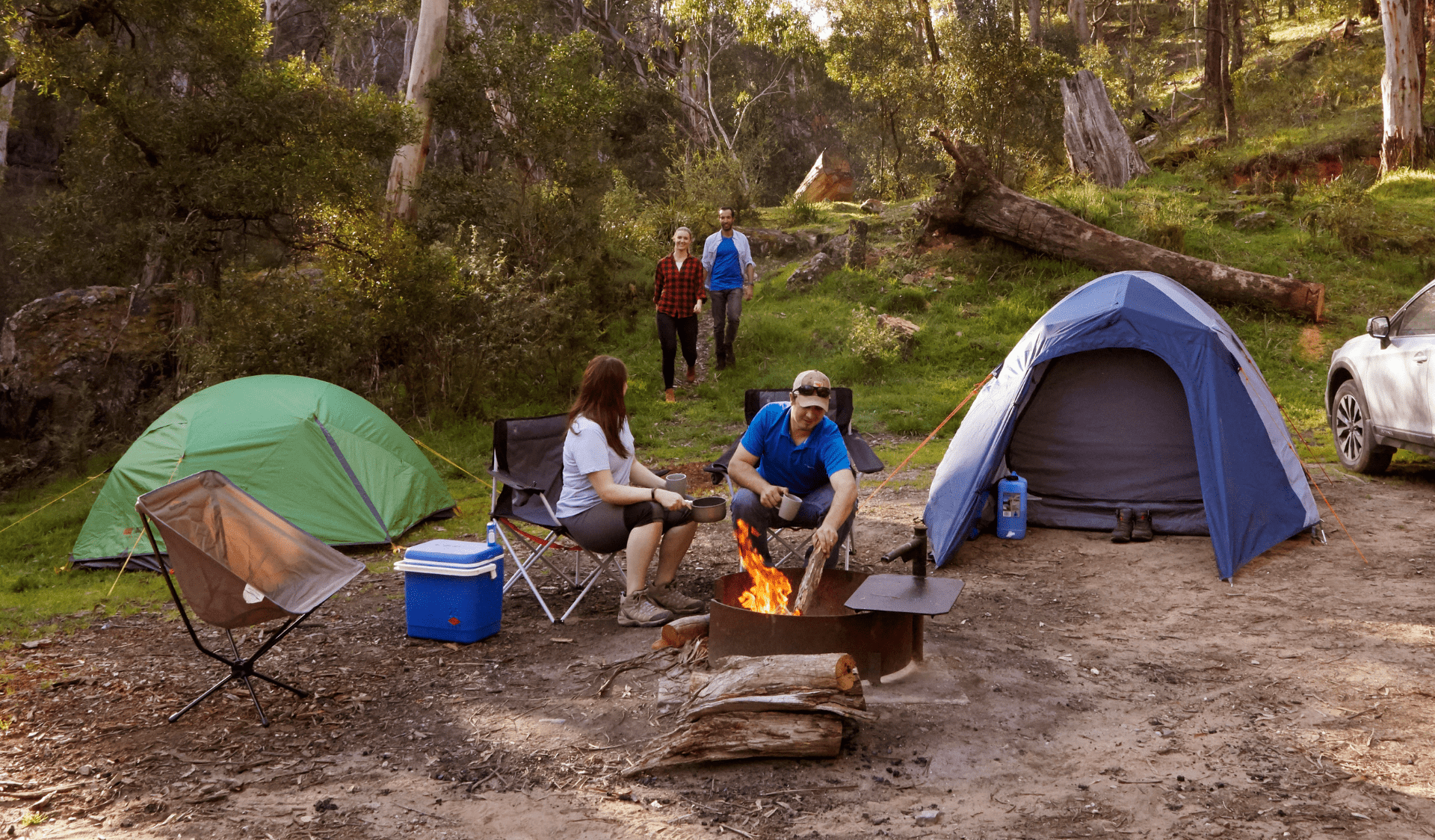Campfire safety
Sitting around a glowing campfire is one of the joys of camping, but with ten per cent of bushfires caused by unsafe campfires, it’s essential to follow the rules and do the right thing.
Not all parks or campgrounds allow campfires. Make sure you check the park signs in the campground before you light a campfire.
Plan ahead
Things to know before you leave home
-
Check the latest conditions and park closures
Follow our safety tips and check our changed conditions and closures information for a great visit.
Search for the park you want to visit and check the latest conditions on the park page.
Download the visitor guide for the park you plan to visit. They contain maps and information on activities, safety and regulations, and facilities available.
-
Download the VicEmergency app
The VicEmergency website (external link) and app provides Victorians with access to information and warnings about incidents including:
- fires
- storms
- floods
- earthquakes
- tsunamis
- shark sightings and more.
The VicEmergency app can be downloaded from the App Store (external link) or Google Play (external link).
-
Check Fire Danger Ratings
Fire Danger Ratings (external link) are important because they help you decide what actions to take to protect yourself and others from bushfires and grassfires.
There are four levels in the Australian Fire Danger Rating System:
- Moderate - Plan and prepare
- High - Be ready to act
- Extreme - Take action now to protect your life and property
- Catastrophic - For your survival, leave bushfire risk areas
Check the 4 Day Forecast for Total Fire Bans & Fire Danger Ratings (external link).
-
Planning to camp overnight?
From 1 July 2025, the Victorian Government will reintroduce half-price camping fees at 131 bookable campgrounds across the Parks Victoria estate for the next two years. Since half-price camping was introduced in 2019, campers have saved more than $25 million in booking fees. The return to half-price camping ensures more Victorians can get out into the great outdoors. For more information visit the booking information page.
When planning your camping trip, remember to:
- Make sure you book before you go.
- If you can’t make it, cancel your booking online.
- Check you’ve packed the essentials before you leave home.
-
Download the Emergency Plus app
The Emergency+ app is a free app that uses GPS functionality built into smart phones to help a Triple Zero (000) caller provide critical location details required to mobilize emergency services.
The Emergency Plus app can be downloaded from the App Store (external link) or Google Play (external link).
The park rules on campfires depend on the type of park:
- National and state parks: campfires can only be lit in the purpose-built fireplaces provided by the park.
- Other types of parks (eg. regional parks): campfires may be permitted, but you will need to check first, and make your campfire following these campfire rules.
Follow these important campfire tips to have a safe and enjoyable visit.
Use this safety checklist before you light a campfire
-
1. Are campfires allowed in your campground?
Find out by checking campground signage or asking a park ranger. If you don't see a sign, play it safe and don't have a campfire.
-
2. What type of park is this?
If you are in a national or state park, campfires can only be lit in the purpose-built fireplaces provided by the park.
-
3. Is it a Total Fire Ban day?
Campfires must not be lit on a Total Fire Ban Day – or be allowed to burn through the night if the next day is a Total Fire Ban.
-
4. Who will stay with the campfire?
An adult (18+) must always be present; awake, within 50m and always have line of sight of the campfire at all times. Never leave a campfire unattended.
-
5. Do you have enough water to put the fire out completely?
You will need at least 10 litres of water, which is about a standard-sized bucket filled to the brim.
-
6. Use water, not soil, to put out a campfire.
When you leave your campsite, always put the campfire out with water, not soil. The fire can smoulder under soil and start burning again later.
-
7. How do you know if your campfire is fully out?
Once you put out your campfire with water, put your hand near the ashes and unburnt wood. Be careful not to touch hot coals! If the ashes are cool to touch, then it’s safe for you to leave the campfire. If the ashes are still warm, pour more water on the campfire until the ashes are cool.
Tips for camping in nature
Information in Easy English, Mandarin (Simplified Chinese), Hindi, Khmer, Karen, Arabic, and Farsi.
Tips for camping in nature (PDF)
It is an offence to light a campfire in parks or locations where they are not permitted. It is also an offence to light a campfire on a day of Total Fire Ban Day or allow a campfire to burn through the night if the next day is a Total Fire Ban.
Before you leave home, download the Campfire and BBQ Safety brochure.
For full campfire rules see Forest Fire Management Victoria’s Fire restrictions, permits and regulations (also available translated into community languages).


